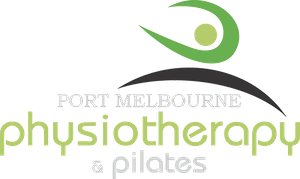OUR BLOG

The role of different health professionals in treating Vertigo
Feeling dizzy or as if the world is spinning around you can be both frightening and disruptive. Vertigo is a common condition that affects your sense of balance. It is often linked to problems in the inner ear or brain. Because vertigo can have many different causes, effective treatment usually requires a team of health

How to safely return to exercise
As physios, we love it when our patients are passionate about movement. There’s nothing better than seeing people eager to return to their daily routines. Whether that’s running, lifting, or just staying active. But here’s the thing: too often, people avoid coming to see us because they assume we’ll say, “You need to stop exercising.”

Wrist and hand considerations in Clinical Pilates
Clinical Pilates and the Wrist–Hand Connection Clinical Pilates is a powerful way to build strength, control and mobility, especially during injury recovery. Our wrists and hands connect us to the springs, bars, and straps that make Pilates unique. For people with wrist or hand pain, though, the thought of weight bearing or gripping can feel

The use of GLP-1 medications: Key nutrition considerations
Medications such as Ozempic and Wegovy (semaglutide) and Mounjaro (tirzepatide) are injectable medications that were originally developed to help people with Type 2 Diabetes better regulate blood sugar levels. More recently, they’ve also become widely used for weight management. These medications mimic the effects of hormones in the gut. (Known as GLP-1 (glucagon-like peptide 1)

Do you need a referral to see a specialist?
A common question that gets asked by patients is “Do I need a referral to see an Orthopaedic Surgeon?” (Or other specialist). I will provide an answer and explanation below: The answer is, strictly speaking NO, but it is strongly advised. Let me explain: Anyone legally can chose to see a specialist WITHOUT a referral.

The new way to manage acute injuries
For years, the go-to advice for managing sprains, strains, and other acute injuries was the acronym RICE — Rest, Ice, Compression, Elevation. While simple and memorable, research over the last decade has shown that this approach may not always be the best for optimal healing. Today, evidence-based guidelines encourage us to move toward a more

Top 5 mistakes when returning to sport after injury
One thing we can usually agree on when playing sport is that the worst part is being stuck on the sidelines. It can be an isolating and mentally challenging time. After an extended stint with injury, returning to play is exciting! However, as a physiotherapist and an AFLW player myself, there are some common themes

Understanding Medical Imaging
One of the most common questions we get as physiotherapists is “Do I need a scan?”. There’s a range of radiology equipment available, and sometimes we may rely on them to confirm or eliminate a particular diagnosis. This may be the case when clinical assessment alone is unable to differentially diagnose a condition. We also

Low Back Pain and Clinical Pilates
Lower back pain can be limiting and regardless of its severity, it can have a significant impact on your well-being. Those with lower back pain can become fearful of movement. However, this can lead to further stiffness and pain. When avoiding movement, joints become even more stiff. This can cause further muscle imbalances or weakness.
Frozen shoulder and the hormonal connection in Menopause
Everyone speaks about the typical symptoms of women entering menopause. Most commonly women expect to deal with hot flashes, mood changes, and disrupted sleep. However, there is another condition that is linked to hormonal fluctuations that very few women know about or are prepared for. Sharp, limiting pain in the shoulder, known as adhesive capsulitis,
